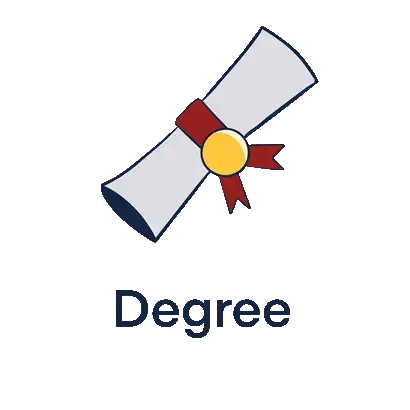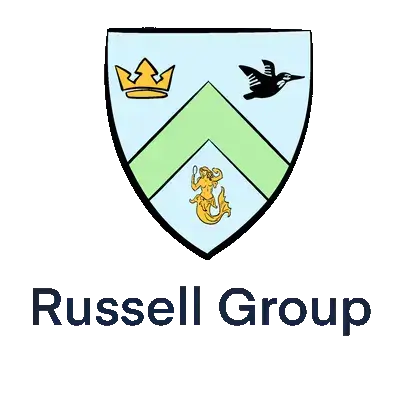The UK Education System: A Guide for International Students
The UK has a great reputation for top-quality schooling and attracts a number of international students every year. Moving to a new school can be challenging, but moving to an entirely new school system can feel overwhelming. Chloe, a qualified teacher with experience teaching in the UK and overseas, shares her thoughts on the key differences.
The education system in the UK is renowned for being rigorous, high quality and holistic, and the qualifications are recognised worldwide by the top institutions.
Whether you are moving to the UK or just want to follow the British system, it can be daunting trying to work out what areas of the curriculum students need to catch up on when transitioning to a new school environment.
This article will help you identify the steps you need to take and things you need to consider when thinking of moving to the British system of teaching.
The structure of the British education system
Schools in the United Kingdom are divided up into Key Stages.
Reception (Aged 4-5)
Key Stage 1:
Year 1 (Aged 5-6)
Year 2 (Aged 6-7)
Key Stage 2:
Year 3 (Aged 7-8)
Year 4 (Aged 8-9)
Year 5 (Aged 9-10)
Year 6 (Aged 10-11)
Key Stage 3:
Year 7 (Aged 11-12)
Year 8 (Aged 12-13)
Year 9 (Aged 13-14)
Key Stage 4:
Year 10 (Aged 14-15)
Year 11 (Aged 15-16)
Key Stage 5:
Year 12 (Aged 16-17)
Year 13 (Aged 17-18)
Most students will go to two or three schools or institutions for their education: a Primary school for Reception and KS1-2, and a Secondary School for KS3-4. As it is compulsory in the UK for students to remain in education until 18, at KS5 some students will stay at the same school for their last two years, this is called Sixth Form.
Otherwise when students leave KS4 they can choose to go to a College, where they can continue their last two years of education.
There are nuances to this depending on the area: some schools will have a separate Infant School (for Reception and KS1) and Junior School (for KS2).
In certain places in the UK, there are Middle Schools, which students can attend from ages 8-13. This are unusual however, with only around 100 remaining.
Independent (or Private) Schools often have a slightly different model. Private primary schools, often referred to as “Prep” Schools support pupils from the age of 4 up to either 11 (like their State counterparts) or 13 years of age. Thereafter, they apply to Senior Schools, which often benchmark entry via the 13 plus examinations.
Most independent Senior Schools will have their own Sixth Form for A level or International Baccalaureate study, but it is not uncommon for some students to move at this point.
Assessment Structure
The statutory assessments students in State Schools have to take are as follows:
KS1: Year 1 Phonics screening test, Year 2 SATs test (covers reading, writing, spelling, grammar and maths)
KS2: Year 4 Times Tables test, Year 6 SATs test (covers reading, writing, spelling, grammar and maths)
KS4: GCSE exams (usually in 5+ subjects)
Schools will usually have many more teacher-assessed tests, in order to ascertain the level students are working at.
When students reach KS5 there are a number of options available to them, including A-levels, BTEC qualifications, T-levels and Apprenticeships.
Private/Independent Schools will have more flexibility in the years before GCSE and A level assessments but will follow the established specifications for GCSE and A level subjects.
How does the curriculum differ?
The advantage of this British Curriculum is that it is easy to track student progression.
There are clear criteria for skills students should have at each Key Stage, and this enables targets to be created to enable individuals to keep up with the expected level for their age. Throughout their entire education, students will have both breadth and depth in their learning- focusing not only on core subjects such as Maths, English and Science, but also the Humanities, Sport and Arts.
Extra-curricular involvement is also encouraged, with nearly every school offering a wide range of opportunities for students. Particularly at Secondary level, this opportunities allow students to have experiences outside of the classroom, and will present them as well-rounded in any interviews they may have in the future.
At KS1 and 2, the main focus is on Maths and English, which helps students build the foundations which they can then apply in other subjects. Often these subjects are taught in the morning, with other subjects such as History, Art or PE being taught in the afternoon.
At KS3, when children reach secondary school, they will have a more structured timetable with designated time each week for each subject. There is still a strong focus on English, Maths and the three Sciences, as these are the subjects that underpin many other disciplines, and will be transferrable across a range of university courses.
GCSE exams are often the culmination of a student’s time in Secondary School. In most circumstances, Maths, English and Science are compulsory subjects to take, and then students get an element of choice over the other subjects, depending on the school.
The GCSE grades a student obtains will allow them to study certain subjects at A-Level, and can also be required by University courses and employers.
Both GCSEs and A-levels are internationally recognised qualifications.
How does the school day differ?
Most schools in the UK start between 8 and 9am, and finish between 3 and 4pm. The structure within that can vary, but generally there is at least one breaktime and lunch break, and in secondary schools there are usually 5 lessons a day of roughly an hour.
Most British schools have a uniform, to encourage discipline and as a leveller for all students.
The school year runs from September to July, and in State schools students get around 13 weeks of holiday spread throughout the year, with 6 weeks in the summer.
Most independent schools have slightly longer holidays than state schools.
What is the education system like in other countries?
Germany
Children start school aged 6 in Germany. From the ages of 6-10 they will be in a Primary School, or Grundschule.
Here, as in the UK, they will study a mixture of courses in order to give them a solid base in their learning which they can take forward when they specialise their subjects.
Students then move to the Lower Secondary School, or Sekundarstufe I, where they will stay until they are 15/16. Here they will study general subjects in more depth. After this students will progress to Sekundarstufe II, where they will stay until they are 18.
Academic students will likely attend a Gymnasium school, where they specialise slightly in subjects they are interested in. This school finishes with exams called Arbitur, which will allow students to get places in University.
USA
Compulsory education in the USA starts with Kindergarten (ages 5-6). From here until 3rd Grade, students study basic English and Maths, as well as developing social skills.
Elementary school covers Kindergarten to 5th Grade, from Grades 6-8 students are in Middle School, and from Grades 9-12 students are in High School, which they finish aged 18.
A difference between the US education system and that of the UK is that in the USA students have breadth right up to 12th Grade, being expected to study English, Maths, Science and languages.
Usually in the last years students will be able to take more classes in subjects they are interested in. Maths and Science in the USA are taught in sequence, which is a large difference to the UK. For example, students might only study Biology in Science and Algebra in Maths for a whole school year, then move onto another subject/topic the following year.
In the UK a mixture is taught each year, so students transferring from one to the other may struggle with knowing some content in more detail and some in less. Students take their SAT exams from the ages of 17-19, and leave with a GPA score. This will be looked at by prospective Universities.
Hong Kong
Education is compulsory in Hong Kong from the ages of 6-15.
This is broken into 6 years of Primary, followed by 3 years of Junior Secondary and up to 3 years of Senior Secondary school.
Students leave with the Hong Kong Diploma of Secondary Education. Junior programmes in Secondary schools are usually varied and give students a taste of many subjects. If students want to continue into a Senior programme they can often stay at the same school. They will be required to study core subjects such as English, Maths, Chinese and then can choose extra subjects such as Humanities, Sciences and Languages.
Top Tips
The first thing to do is research the types of schools you wish to send your child. Is it a state school or a private school? Either way, you will need to familiarise yourself with the admissions policy of each school and the best way to do this is to visit the schools website.
Next steps
If you are considering the British Education system, it is now time to think about which school you would like to join. You can get lots of information about schools from their website, but if you have the opportunity to go on an Open Day/ Evening (most schools have these in the Autumn), you will get a much better idea of the atmosphere of the school.
Depending on the year group your child will be joining, having a look at the National Curriculum on the government website (National curriculum – GOV.UK (www.gov.uk) will give you an idea of the skills students are expected to have at each Key Stage. Lots of past papers for SATs and GCSE exams are available online, to allow you to self-assess where students are in relation to the statutory tests.
The British curriculum is broad, rigorous and exciting, and provides learners with an excellent basis for their education.














Start the discussion!